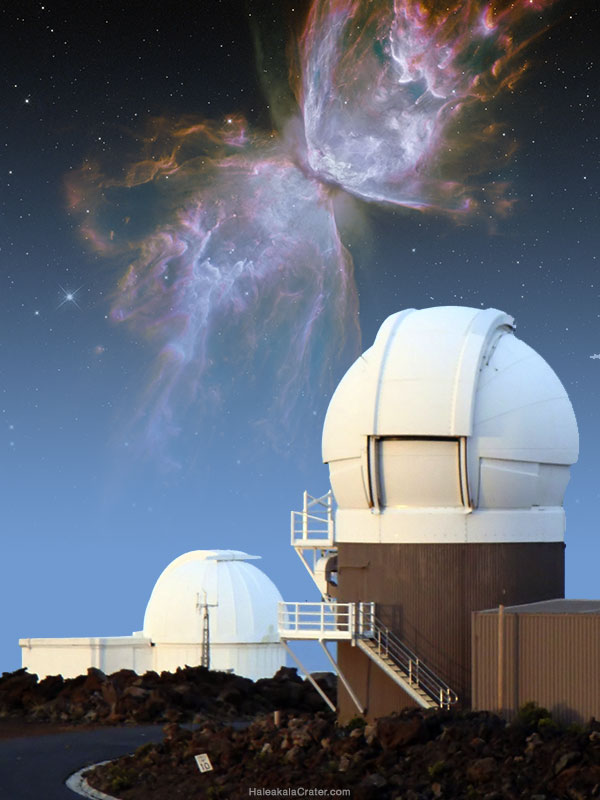Haleakala’s Science City
 Of Science City’s many accomplishments is the detection of 19 near-Earth asteroids—the highest number of asteroids monitored in a single night—and the tracking of Venus. Most recently, Maui’s loftiest peak saw the unveiling of what’s been called the biggest digital map of the cosmos—an assemblage of data that showcases three billion stars, galaxies, and other celestial objects.
Of Science City’s many accomplishments is the detection of 19 near-Earth asteroids—the highest number of asteroids monitored in a single night—and the tracking of Venus. Most recently, Maui’s loftiest peak saw the unveiling of what’s been called the biggest digital map of the cosmos—an assemblage of data that showcases three billion stars, galaxies, and other celestial objects.
Up next?
The completion of the controversial, $344 million Daniel K. Inouye Solar Telescope, which will become the world’s largest solar telescope, the National Science Foundation reports, and will provide “scientists with new insights into the physics of the sun and a better understanding of how space weather affects satellites, the power grid, and other infrastructure upon which human society has come to rely.”
Unfortunately, the Haleakala observatory is not open to the general public, but this area is one of the most underrated places to visit on Maui.









